This painting depicts a sartore di veste — a tailor specialised in making vesta or toga worn by high-ranking state officials of the Venetian Republic.
The coat of arms on the wall behind the tailor is similar to that of the Grimani family, and the doge at the time, when Grevembroch made these paintings, was Pietro Grimani.
Source: Gli abiti de veneziani di quasi ogni età con diligenza raccolti e dipinti nel secolo XVIII, by Giovanni Grevembroch (1731–1807), which in four volumes contains over six hundred watercolours of how Venetians dressed in the 1700s.
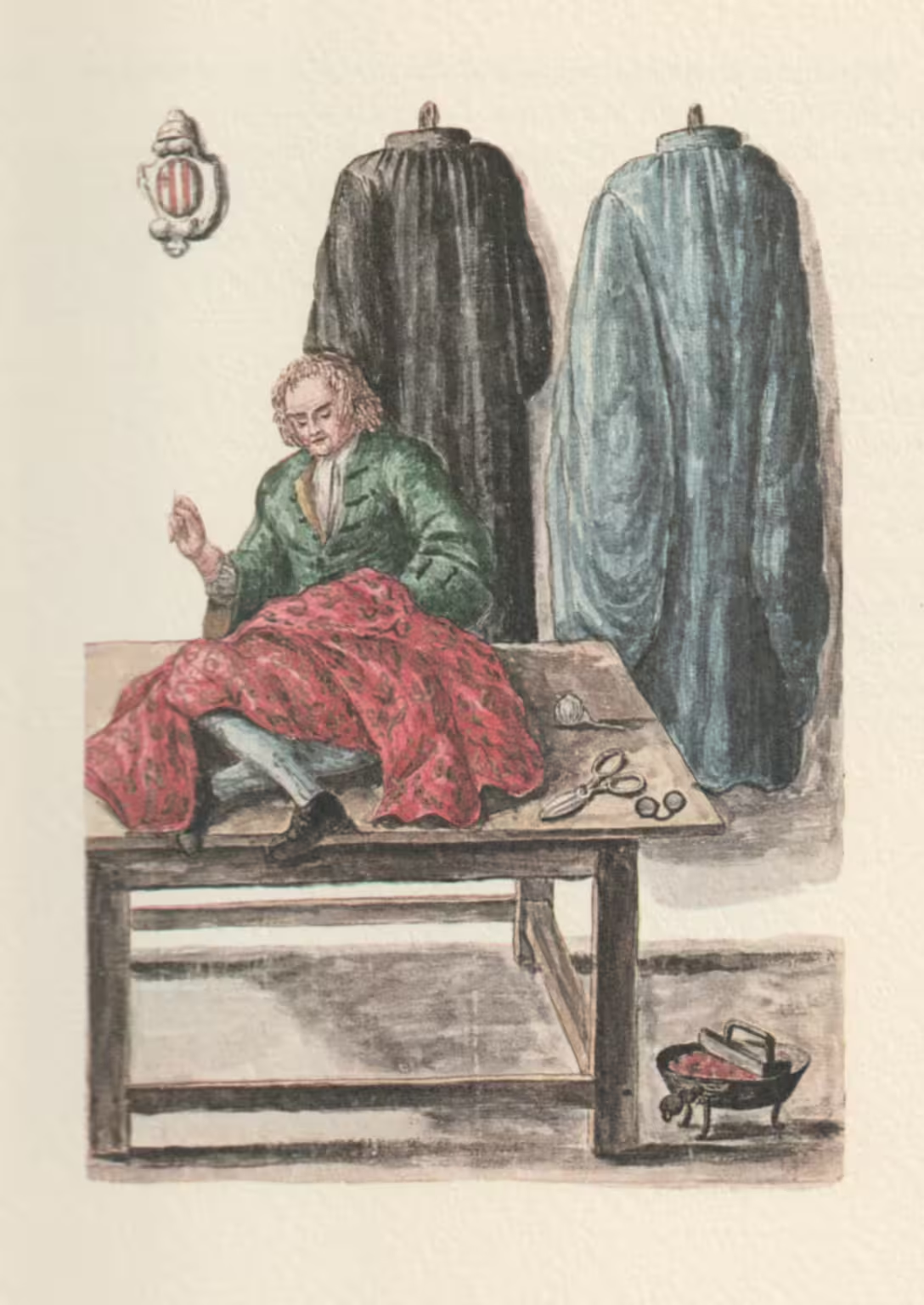
Tailor of the Doge
The Craft of the Tailors always appears well affected and industrious, not so much for the profession, where it distinguished itself, as in relation to the natural creativity, so as to stand out in every time producer of new fashions. However, it never succumbed to capricious fickleness; proportionate however to the times, and degrees; the Patrician Dress because nothing else was taken into consideration, than the toga, and to the Senatorial dress, now with open sleeves, now narrow, now black, now violet, now purple.
This task is assigned to a few, who distinguish themselves from every kind of Artists and boast of serving only the Nobility, and even the Most Serene Prince, who does not use anyone else, except the usual and honest Antonio Tomasoni of the District of S. Fantino, capable of cutting the mantle, the Dogallina, and any other Chlamys assigned to his rank, or residing in the Palace, or on the way to visits to the Churches, or towards any other primary Function; in which case he himself has the honour of supporting the precious and royal Palio, as Giuseppe his Father did, and Antonio his Grandfather.
Corrige not Giuseppe, and Antonio were neither Sartori, nor Father nor Grandfather of Antonio Tomasoni; but rather the truth was, that before him, a certain Giacomo di Antonio Giuriati Sartore in Rialto fulfilled this task.
Mr. Pietro Acquila was an ingenious tailor, not to mention an industrious manipulator of elegant and economically constructed furniture in his old age.
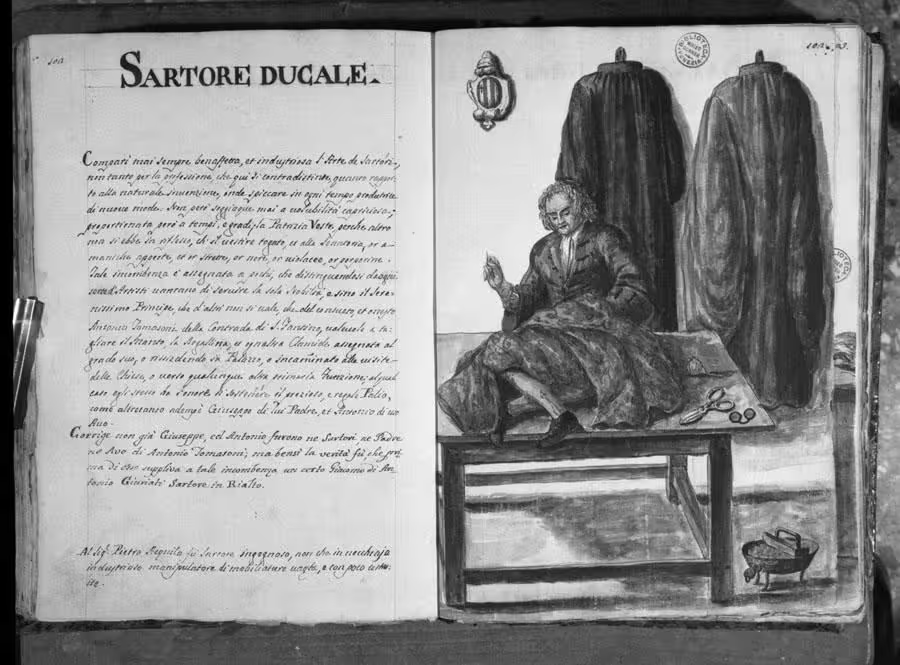
Original Italian text
Sartore Ducale
Compari mai sempre ben affetta, et industriosa l’Arte de Sartori, non tanto per la professione, che qui si contradistinse, quanto rapporto alla naturale invenzione, onde spiccare in ogni tempo produtrice di nuove mode. Non però soggiaque mai a volubilità capriciosa; proportionata però a tempi, e gradi; la Patrizia Veste, perche altro non si ebbe in riflesso, ch’il vestire togato, et alla Senatoria, or a maniche apperte, et or strette, or nere, or violacee, or porporine.
Tale incombenza è assegnata a pochi, che distinguendosi da ogni sorte d’Artisti vantano di servire la sola Nobiltà, e sino il Serenissimo Principe, che d’altri non si vale, che del consueto, et onesto Antonio Tomasoni della Contrada di S. Fantino, valevole a tagliare il manto, la Dogallina, et ognaltra Clamide assegnata al grado suo, o rissiedendo in Palazzo, o incamminato alle visite delle Chiese, o verso qualunque altra primaria Funzione; al qual caso egli stesso ha l’onore di sostenere il prezioso, e regale Palio, come altretanto adempi Giuseppe di lui Padre, et Antonio di esso Avo.
Corrige non già Giuseppe, ed Antonio furono ne Sartori, ne Padre né Avo di Antonio Tomasoni; ma bensì la verità fù, che prima di esso suppliva a tale incombenza un certo Giacomo di Antonio Giuriati Sartore in Rialto.
Al Sig.r Pietro Acquila fù Sartore ingegnoso, non che in vecchiaja industriasa manipulatore di mobiliature vaghe, e con poco costruite.
Grevembroch (1981), vol. 4, p. 102.
Related articles
Bibliography
- Grevembroch, Giovanni. Gli abiti de veneziani di quasi ogni eta con diligenza raccolti e dipinti nel secolo XVIII, orig. c. 1754. Venezia, Filippi Editore, 1981. [more]
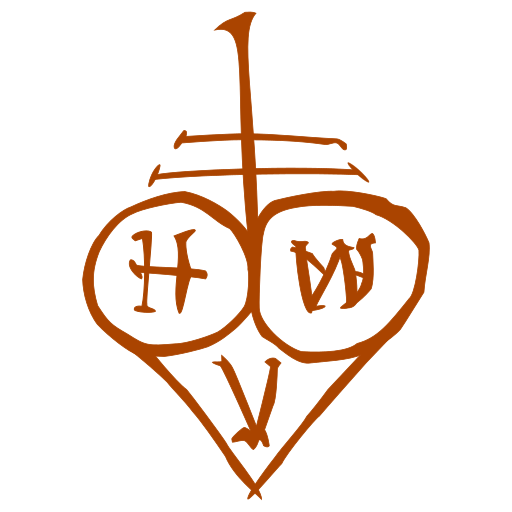
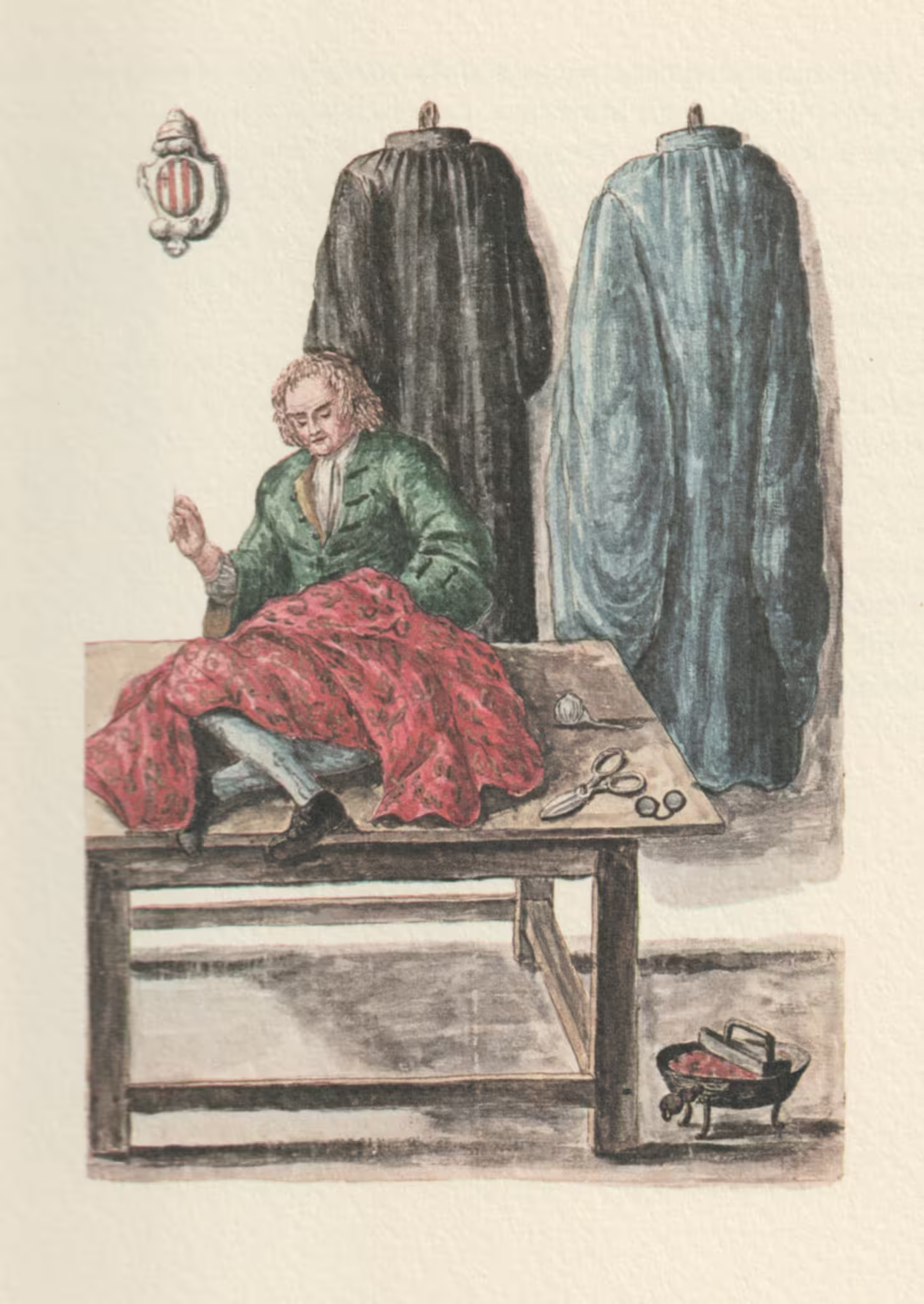
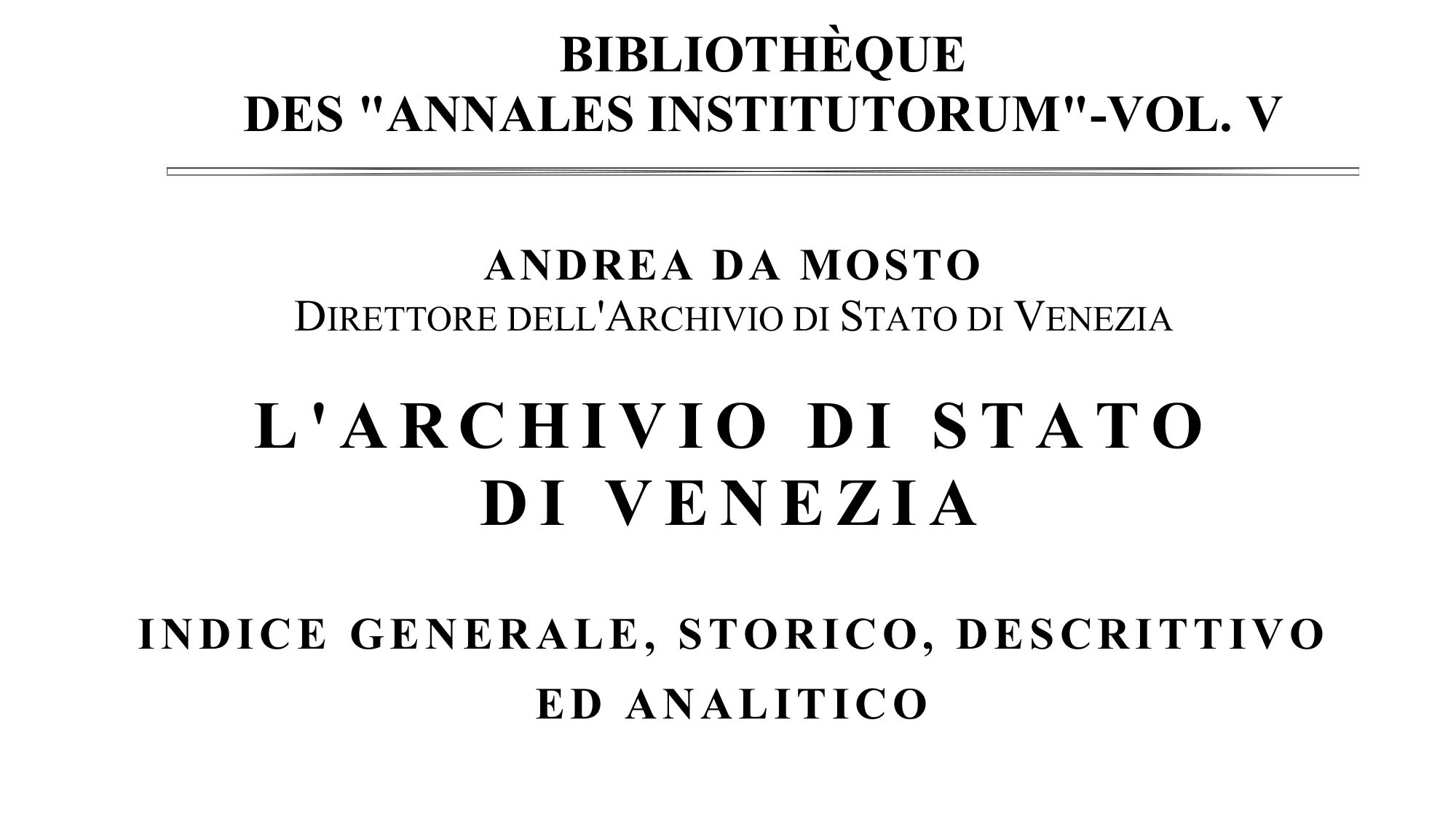
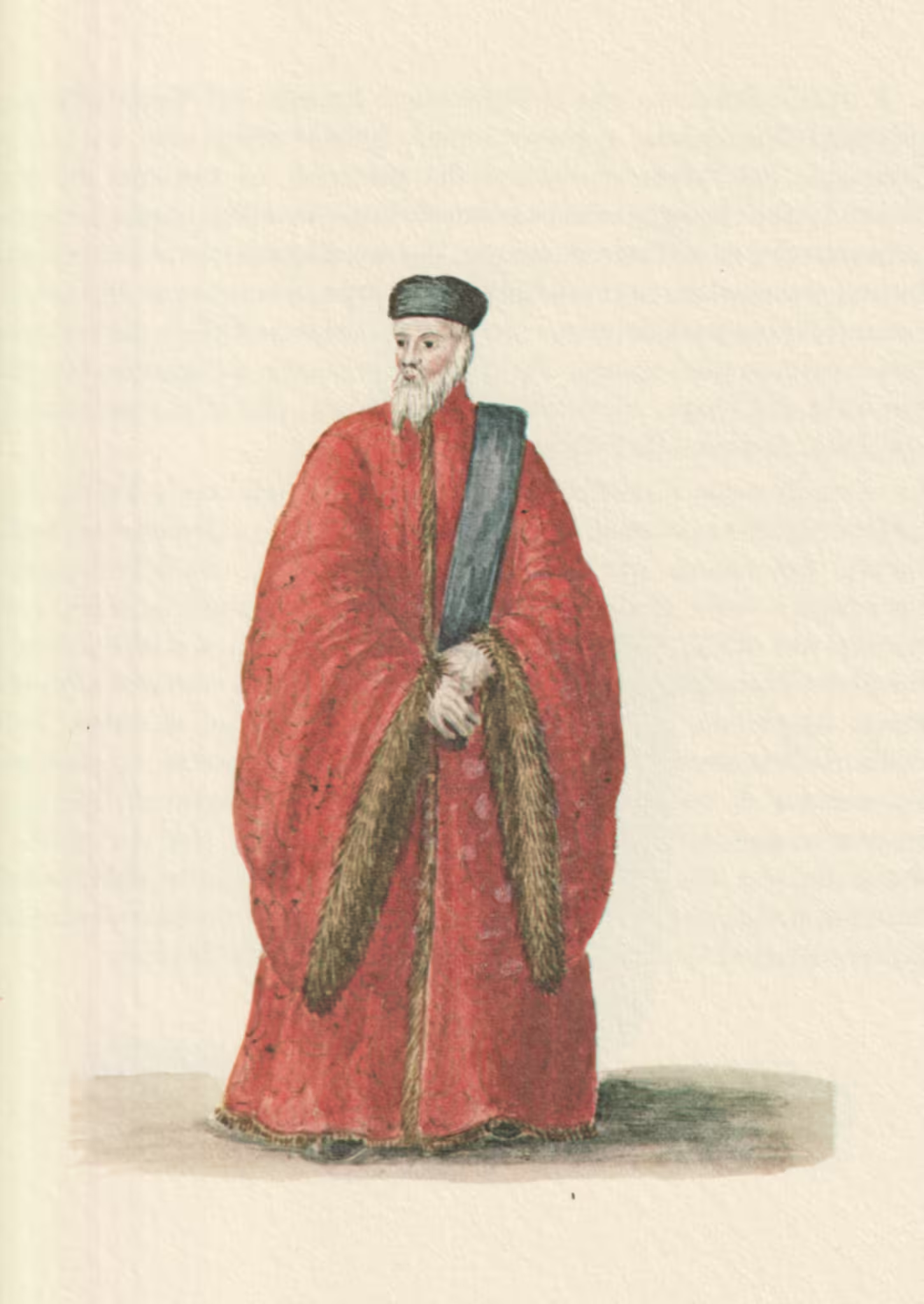
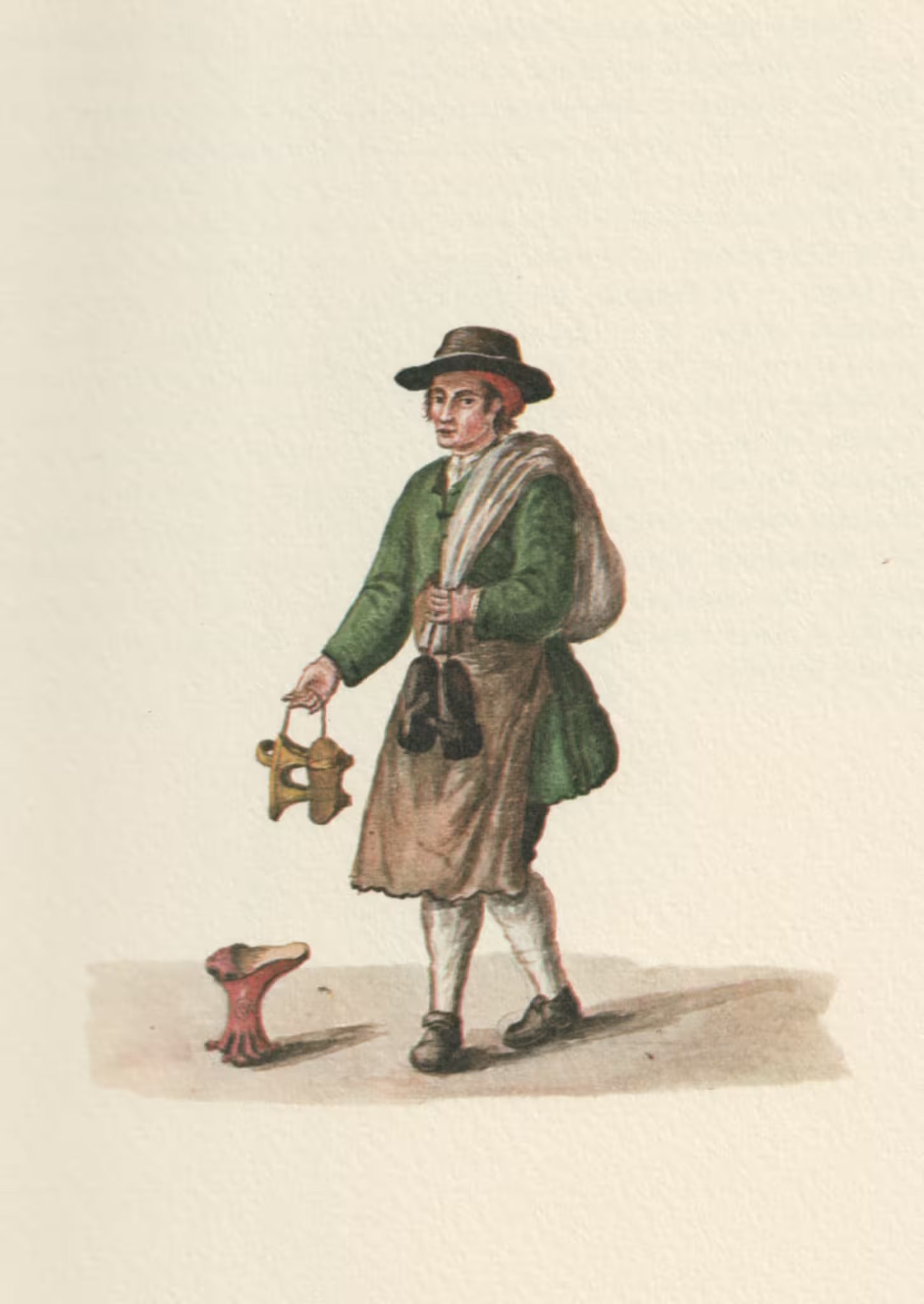
Leave a Reply